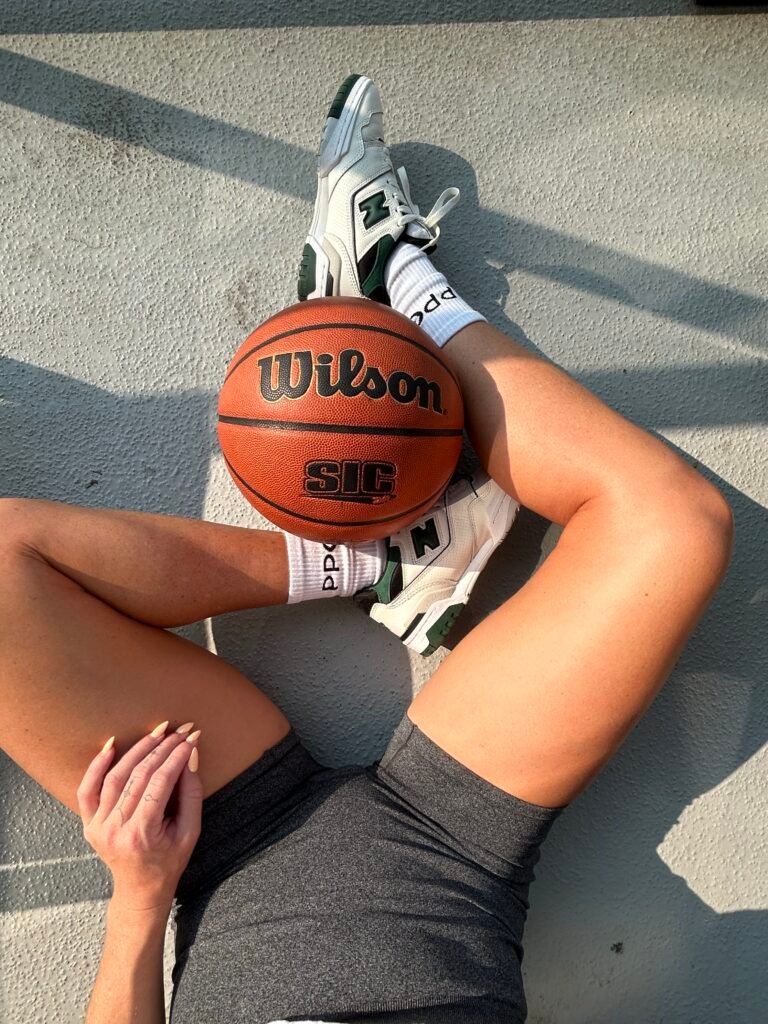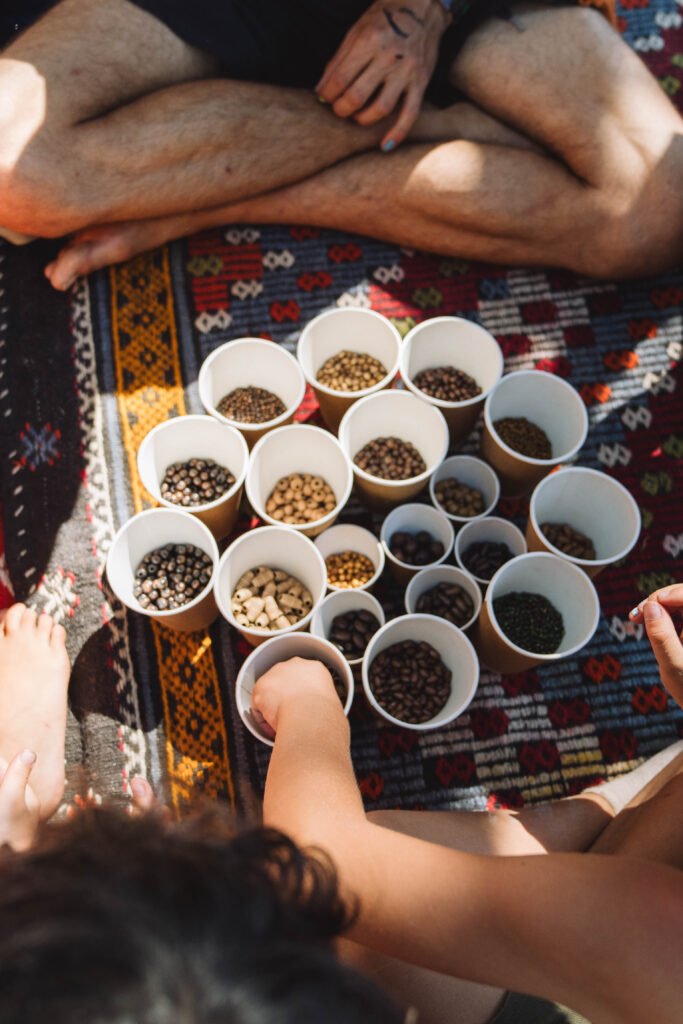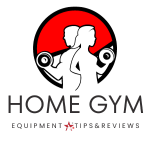In this article, you will learn about effective leg exercises that combine the use of resistance bands and weights. By targeting specific muscle groups in your legs, these exercises provide a comprehensive workout that promotes strength and tone. Whether you are looking to enhance athletic performance or improve overall muscle definition, incorporating these leg exercises into your routine will help you achieve your fitness goals.

Leg Exercises Using Bands And Weights
Leg exercises are an essential component of any comprehensive workout routine. They not only help build strength and tone in your lower body but also improve stability, balance, and athletic performance. Incorporating resistance bands and weights into your leg workout can add an extra level of challenge and intensity, allowing you to effectively target specific muscle groups. In this article, we will explore various leg exercises using bands and weights, discuss their benefits, and provide tips for an effective workout.
Benefits of Leg Exercises
Improved Lower Body Strength
One of the primary benefits of leg exercises is improved lower body strength. Squats, lunges, deadlifts, and other exercises help strengthen your quadriceps, hamstrings, glutes, and calves. As you gradually increase the resistance and intensity of your workouts, you will notice significant improvements in your leg strength, making daily activities and sports performances easier.
Increased Muscle Tone
Leg exercises using bands and weights can also help you achieve increased muscle tone. By targeting specific muscle groups, such as the thighs and glutes, you can sculpt and define these areas. As you consistently engage in leg exercises, you will notice improved muscle definition and a more toned lower body.
Enhanced Stability and Balance
Strong leg muscles are crucial for maintaining stability and balance. Leg exercises that engage the muscles around the hip, knee, and ankle joints can help improve your overall balance and stability. This, in turn, can reduce the risk of falls and injuries, especially as you age.
Boosted Athletic Performance
Whether you are an athlete or a fitness enthusiast, leg exercises using bands and weights can greatly enhance your athletic performance. Strong and well-developed leg muscles are essential for running, jumping, and other explosive movements. By incorporating leg exercises into your training regimen, you can improve your power, speed, agility, and overall athletic ability.
Equipment Required
Before diving into leg exercises using bands and weights, let’s take a look at the equipment you will need for these workouts:
Resistance Bands
Resistance bands are inexpensive and versatile exercise tools that can be used to add resistance and challenge to your leg workouts. They come in different resistance levels, allowing you to gradually progress and increase the intensity of your exercises.
Dumbbells or Barbells
Dumbbells or barbells are essential for exercises like squats, lunges, and deadlifts that require additional weight. Having a range of weights will enable you to select the appropriate level of resistance for each exercise and target different muscle groups effectively.
Exercise Mat
An exercise mat is not mandatory but recommended for added comfort and support during floor exercises such as glute bridges and hip thrusts. It provides cushioning and stability, preventing strain on your joints.
Warm-up Routine
Before starting any leg workout, it is crucial to warm up your muscles and prepare your body for the exercises ahead. Here is a simple warm-up routine you can follow:
Dynamic Stretches
Begin by performing dynamic stretches to warm up your leg muscles. Dynamic stretches involve movement and help increase your range of motion. Examples of dynamic stretches include leg swings, high kicks, and walking lunges.
Leg Swings
Stand next to a wall or support and gently swing one leg forward and backward, maintaining a controlled motion. Perform 10 to 15 swings on each leg to warm up the hip flexors, hamstrings, and quadriceps.
High Knees
March in place while lifting your knees towards your chest as high as possible. Engage your core and keep your upper body upright. Perform high knees for 30 seconds to a minute to elevate your heart rate and warm up the entire lower body.

1. Squats
Squats are a fundamental leg exercise that targets the quads, hamstrings, glutes, and calves. They can be performed using resistance bands or with additional weight like dumbbells or barbells. Here’s how to perform squats:
Muscles Targeted
- Quadriceps
- Hamstrings
- Glutes
- Calves
Execution
- Stand with your feet shoulder-width apart and your toes slightly turned out.
- Engage your core, keep your chest upright, and maintain a neutral spine throughout the exercise.
- Slowly lower your body by bending your knees and pushing your hips back, as if sitting down onto a chair.
- Keep your knees in line with your toes and avoid letting them cave in.
- Lower yourself until your thighs are parallel to the ground, or as far as your mobility allows.
- Push through your heels and squeeze your glutes to return to the starting position.
- Repeat for the desired number of reps.
Variations
- Goblet Squats: Hold a dumbbell or kettlebell close to your chest as you perform squats. This variation adds additional resistance to the exercise.
- Jump Squats: Perform a regular squat but explode upwards into a jump, landing softly back into the squat position. This variation incorporates plyometric movements, enhancing power and explosiveness.
2. Lunges
Lunges are another effective leg exercise that targets the quads, hamstrings, glutes, and calves. They can be done using resistance bands or with additional weight. Here’s how to perform lunges:
Muscles Targeted
- Quadriceps
- Hamstrings
- Glutes
- Calves
Execution
- Begin by standing tall with your feet hip-width apart.
- Take a big step forward with your right foot, keeping your upper body upright and your core engaged.
- Lower your body towards the ground, bending both knees until your right thigh is parallel to the floor and your left knee is almost touching the ground.
- Ensure your right knee is directly above your ankle, and your left knee is hovering just above the floor.
- Push through your right heel to return to the starting position.
- Repeat the same steps on the opposite side.
- Continue alternating legs for the desired number of reps.
Variations
- Walking Lunges: Instead of stepping forward and backward, take consecutive steps forward with each lunge. This variation adds an element of cardiovascular fitness and stability.
- Reverse Lunges: Instead of stepping forward, step backward into the lunge. Reverse lunges place a slightly different emphasis on the muscles, providing variation in your workout routine.

3. Deadlifts
Deadlifts are a compound exercise that primarily targets the hamstrings and glutes while also engaging the quadriceps and lower back. They can be performed using dumbbells, barbells, or resistance bands. Here’s how to perform deadlifts:
Muscles Targeted
- Hamstrings
- Glutes
- Quadriceps
- Lower Back
Execution
- Stand with your feet hip-width apart, toes pointing forward, and knees slightly bent.
- Hold the dumbbells or barbell with an overhand grip, hands slightly wider than shoulder-width apart, and palms facing your body.
- Engage your core, keep your back straight, and maintain a slight arch in your lower back.
- Bend at the hips, pushing them backward while maintaining a slight bend in your knees.
- Lower the weights towards the ground, allowing them to glide along your thighs until you feel a stretch in your hamstrings.
- Keep the weights close to your body and push through your heels to return to the starting position, squeezing your glutes at the top.
- Repeat for the desired number of reps.
Variations
- Single-Leg Deadlifts: Perform the deadlift exercise, but lift one leg off the ground, extending it backward as you hinge at the hips. This variation adds an element of balance and stability.
- Romanian Deadlifts: Instead of starting from the ground, begin with the weights at hip height. Bend at the hips to lower the weights towards the ground while maintaining a soft bend in your knees. Romanian deadlifts primarily target the hamstrings and glutes.
4. Step-Ups
Step-ups are a fantastic leg exercise that targets the quadriceps, hamstrings, and glutes. They can be performed using a bench, step platform, or box, with or without additional weights. Here’s how to perform step-ups:
Muscles Targeted
- Quadriceps
- Hamstrings
- Glutes
- Calves
Execution
- Stand facing a bench or step platform, keeping your feet hip-width apart.
- Step onto the bench or platform with your right foot, ensuring your entire foot is on the surface.
- Push through your right heel and lift your body upward, bringing your left foot up onto the bench or platform.
- Stand tall on the bench, with your hips and knees fully extended.
- Slowly step your left foot back down to the starting position, followed by your right foot.
- Continue alternating steps for the desired number of reps.
Variations
- Weighted Step-Ups: Hold dumbbells or a barbell in each hand as you perform step-ups. The added weight increases the challenge and engages the muscles more effectively.
- Explosive Step-Ups: Perform step-ups by explosively driving your body upward, using your legs and explosive power to propel yourself off the ground slightly. This variation adds an element of plyometrics to the exercise, targeting fast-twitch muscle fibers and improving power.
5. Bulgarian Split Squats
Bulgarian Split Squats are a challenging unilateral leg exercise that primarily targets the quadriceps, but also engages the hamstrings and glutes. They require stability and control and can be performed using dumbbells, barbells, or resistance bands. Here’s how to perform Bulgarian Split Squats:
Muscles Targeted
- Quadriceps
- Hamstrings
- Glutes
Execution
- Stand facing away from a bench or step platform and position your right foot approximately two to three feet in front of the bench.
- Extend your left leg backward and rest the top of your left foot on the bench or platform.
- Engage your core and slowly lower your body towards the ground by bending your right knee.
- Keep your upper body upright, chest lifted, and avoid letting your knee cave inward.
- Lower yourself until your right thigh is parallel to the floor or as far as your mobility allows.
- Push through your right heel, squeeze your glutes, and extend your right leg to return to the starting position.
- Repeat the same steps on the opposite side.
- Continue alternating legs for the desired number of reps.
Variations
- Weighted Bulgarian Split Squats: Hold dumbbells or a barbell in each hand as you perform Bulgarian Split Squats. The added weight increases the challenge and intensifies the exercise.
- Bulgarian Split Squat Jumps: Perform Bulgarian Split Squats, but explode upward into a jump, switching legs mid-air to land in the opposite lunge position. This variation combines strength and plyometric training for an added challenge.
Conclusion
Regular leg exercises using bands and weights can greatly improve lower body strength, muscle tone, stability, and athletic performance. By incorporating a variety of exercises targeting different muscle groups, you can effectively work your legs and achieve desired results. Remember to use correct form, gradually progress, and listen to your body to prevent injuries and maximize the benefits of your leg workout. So, go ahead and start incorporating these leg exercises into your fitness routine to achieve stronger, more toned, and powerful legs.


One thought on “Leg Exercises Using Bands And Weights”